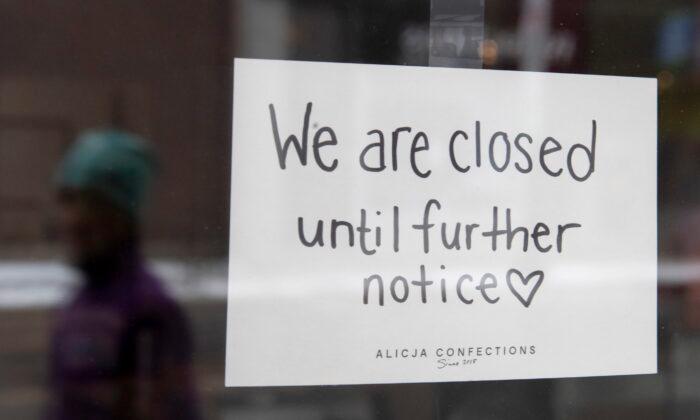Even with the easing of COVID-19 restrictions, Canadian businesses are recovering at a slow pace due to labour shortages and supply chain disruptions, which is leading to higher expectations of inflation, a new Bank of Canada survey says.
According to the Bank of Canada’s business outlook survey, while Canadian firms are optimistic about faster sales growth in the coming 12 months, they are also experiencing serious capacity constraints. In the third quarter of 2021, 65 percent of businesses said they would have “some difficulty” or “significant difficulty” meeting an unexpected surge in demand.
“An unusually large portion of firms said they would have difficulty meeting an unexpected increase in demand. This is true in all sectors and regions except the Prairies,” the central bank’s businesses survey said.
“These bottlenecks are often caused by shipping delays and the impacts of COVID‑19 abroad, particularly the Delta variant. Businesses reported that these disruptions have worsened and become more common since the second quarter.”
The bank also found that supply chain constraints are most severe in the manufacturing sector. Firms now also expect supply chain disruptions to last until at least the second half of 2022.
However, labour shortages present an even bigger challenge for businesses. Travel restrictions, government income support, and workers’ health concerns are adding to structural and cyclical factors that existed even before the pandemic.
Over a third of firms (36 percent) said they are experiencing labour shortages which are restricting their ability to meet customer demands, the business survey shows.
“Firms facing capacity challenges continue to adjust internal work processes and their supply chains through a variety of creative measures,” the survey said. These measures include working more closely with suppliers, adding overtime hours, investing in automation, and finding efficiencies.
Firms also reported somewhat higher “retirement and quit rates” among staff compared with pre-pandemic levels, suggesting that a change in workers’ preferences “may be affecting the availability of labour.”
This is consistent with more Canadians (roughly 19 percent) reporting more willingness to leave their jobs voluntarily, as shown in the consumer survey.
The labour shortage is also adding pressure on companies to increase wages, with roughly 57 percent of them saying they expect labour costs to be higher over the coming year compared to last year. Only 7 percent expected labour costs to be lower.
Employment intentions remain at a record high, and firms also showed more intentions to increase capital investments over the next year than in the previous year, particularly in machinery and equipment.






Friends Read Free